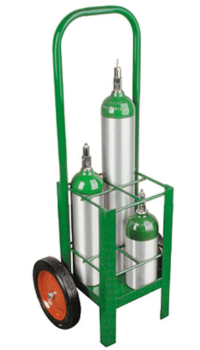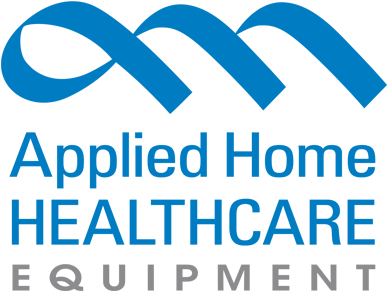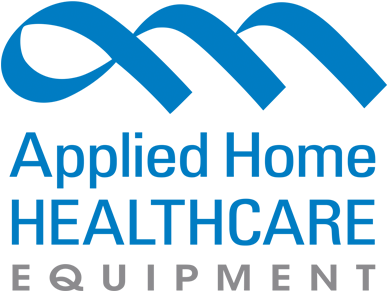PRODUCT CATEGORIES
CLASSES/REGISTRATION
WHAT'S YOUR ROLE?
Selecting the Best Cylinder Type
 As a home healthcare provider or oxygen transfiller, selecting the best oxygen cylinder type for clients is essential to delivering effective and efficient care. With a wide range of cylinder sizes, materials, and capacities, it’s important to understand how each type meets different patient needs. This guide will walk you through the most common oxygen cylinder options, including key considerations like cylinder material (steel or aluminum) to help you choose the best cylinder for your clients.
As a home healthcare provider or oxygen transfiller, selecting the best oxygen cylinder type for clients is essential to delivering effective and efficient care. With a wide range of cylinder sizes, materials, and capacities, it’s important to understand how each type meets different patient needs. This guide will walk you through the most common oxygen cylinder options, including key considerations like cylinder material (steel or aluminum) to help you choose the best cylinder for your clients.
Understanding Cylinder Types and Materials
Oxygen cylinders vary in size, capacity, and material. Many smaller and medium cylinders are crafted from lightweight aluminum, which is ideal for portability, while larger stationary cylinders are often made of durable steel for extended oxygen storage. Here, we’ll break down the types of cylinders most commonly used in healthcare settings and discuss their features to guide your selection process.
Small Portable Cylinders (A, B, C, D, E)
Lightweight and portable, small cylinders are ideal for active clients who require oxygen on the go. These cylinders are usually made from aluminum, reducing weight without compromising capacity, and are perfect for clients needing a mobile oxygen solution.
- Common Types: M4, ML6, M6, M7, M9
- Material: Typically aluminum for portability
- Capacity: 113-425 liters (3.99-15.01 cubic feet)
- Weight: 1.6-5.3 lbs.
- Use Case: Designed for clients who need mobility and independence. Suitable for daily activities, errands, and short trips.
Medium Cylinders (Jumbo D, M22, M24)
Medium-sized cylinders provide a balance between oxygen capacity and portability. These are also frequently made from aluminum, making them manageable for moderately active clients who still require a larger oxygen supply.
- Common Types: M15, M22, M24
- Material: Often aluminum, but some models are available in steel for extra durability
- Capacity: 640-680 liters (22.60-24.01 cubic feet)
- Weight: 7.9-8 lbs.
- Use Case: Suitable for clients who need more oxygen capacity than small cylinders offer but still value some portability. Ideal for home use and moderate activities.
Large Cylinders (H, M60, M/MM/M122, M250)
Larger cylinders, usually made from steel, are designed for clients needing continuous oxygen in stationary settings. Their heavy-duty material offers enhanced durability, making them optimal for home or medical facilities.
- Common Types: M60, M/MM/M122, M250
- Material: Primarily steel, some may be aluminum
- Capacity: 1,738-7,080 liters (61.38-250.03 cubic feet)
- Weight: 22.3-114 lbs.
- Use Case: Ideal for clients who require a constant oxygen supply at home, delivering uninterrupted oxygen flow without frequent refills.
How to Choose the Right Cylinder for Your Clients
When selecting a cylinder for clients, consider both the material and type, as they affect weight, portability, and durability. Here are key factors to help guide your choice:
Evaluate Client Oxygen Needs
Begin by assessing the client’s oxygen flow rate and whether they need continuous or intermittent oxygen. High-flow needs benefit from large steel cylinders, while intermittent needs are often met with smaller, portable aluminum cylinders.
Consider Mobility and Lifestyle
Clients who are mobile benefit from aluminum cylinders due to their lighter weight. For those with an active lifestyle, small aluminum cylinders offer flexibility. For clients with limited mobility, larger, stationary steel cylinders can provide a longer-lasting oxygen supply.
Plan for Duration and Refill Frequency
Clients with higher oxygen demands may require large steel cylinders for extended usage, minimizing the need for frequent refills. For lighter or intermittent oxygen needs, aluminum cylinders are a convenient and portable option that still provides adequate duration.
Streamline Refilling and Logistics
For oxygen transfillers, smaller aluminum cylinders are easier to manage and refill, while larger steel cylinders may require specialized equipment. Efficient logistics and an organized inventory ensure clients have continuous access to oxygen.
Improving Oxygen Therapy with the Right Cylinder Choice
Selecting the right oxygen cylinder enhances the quality of care you provide. You can ensure clients receive optimal therapy by choosing the correct material and cylinder type based on oxygen needs, mobility, duration, and logistical efficiency. At Applied Home Healthcare Equipment, we’re here to help you select the best oxygen solutions for your clients. Contact us to explore our extensive range of oxygen cylinders, including aluminum and steel options, and find the perfect fit for your client’s unique needs.
You Might Also Like
Subscribe to our Newsletter
Get the latest regulatory info, accreditation news and exclusive discounts!
 View Cart []
View Cart []
